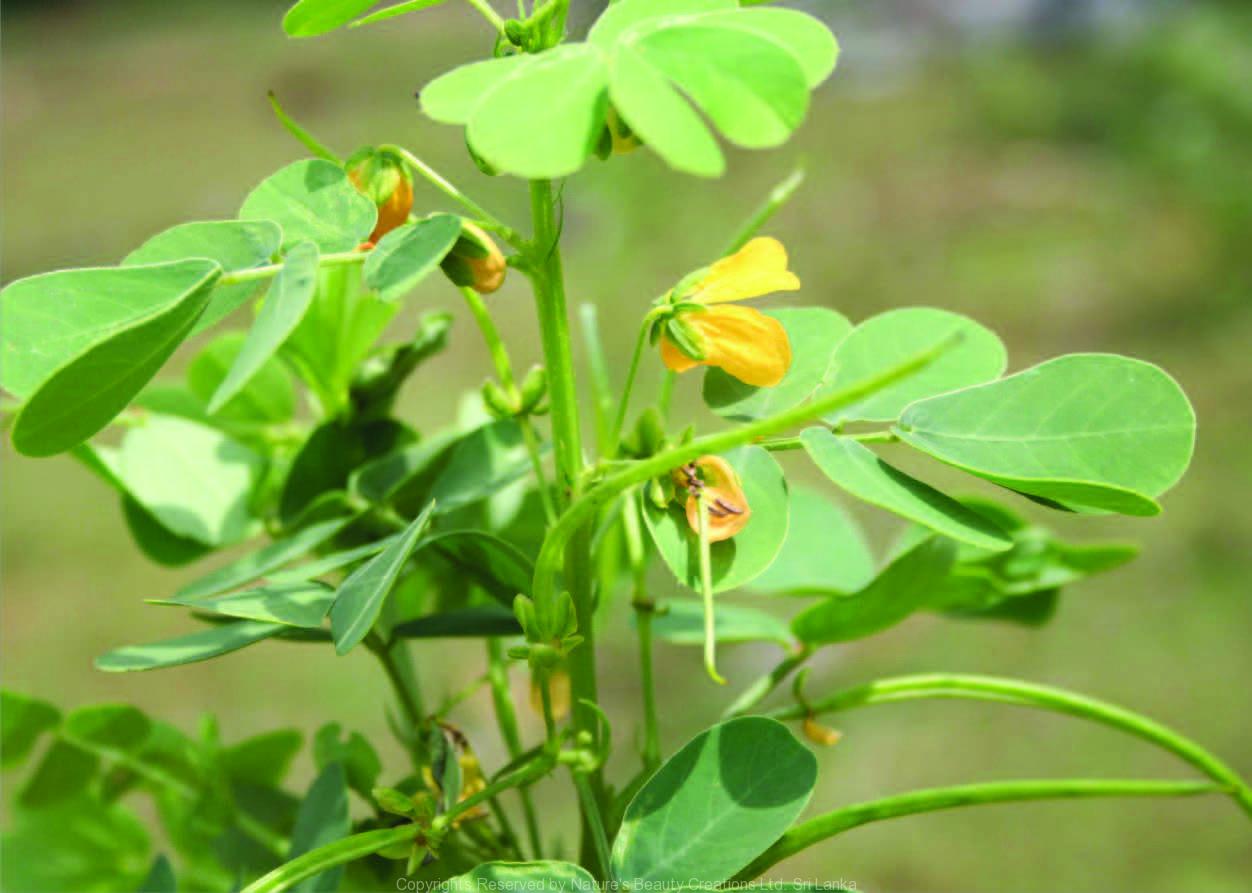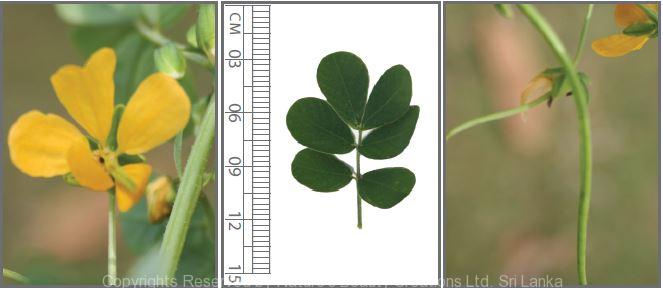

Traditional Knowledge
Useful plant parts :
Whole plant, leaf, seed and pod
Uses in traditional medicine :
- Salad prepared from young leaves with red onions is taken as a laxative
- Herbal drink prepared of seed decoction is taken for liver complications and eye diseases
- Plant acts as a vermifuge and purgative
- Pods are used to treat dysentery and ophthalmia
Scientific Research
Chemical constituents:
Naphthopyrone glycoside: cassiaside, anthraquinones: obtusin and its derivatives, obtusifolin, physcion, emodin, chrysophanol from seeds
Bioactivity :
Alcohol and aqueous extracts of seeds: anthelmintic, effective in postprandial blood glucose control, antimutagenic, hypolipidaemic; naphthopyrone glycosides: hepatoprotective; methanol extract of leaves: anti-inflammatory, antioxidative; cream preparid with methanol extract of leaves: antipsoriatic
Clinical:
Supplement prepared from fibre extract of plant improves serum lipid status in type II diabetes
References : Arya, V. and Yadav, J. P., (2010), Anti oxidant and total phenolics in leaves extracts of Cassia tora L., Pharmacologyonline, 2, 1030-1036. Deore, S. L. et al., (2009), In vitro Anthelmintic activity of Cassia tora, International Journal of ChemTech Research, 1(2), 177-179. Cho, S. H. et al., (2005), Effects of Cassia tora Fiber Supplement on Serum Lipids in Korean Diabetic Patients, Journal of Medicinal Food, 8(3), 311-318. Choi, J. S. et al., (1997), In Vitro Antimutagenic Effects of Anthraquinone Aglycones and Naphthopyrone Glycosides from Cassia tora, Planta Med, 63(1), 11-14. Jang, D. S. et al., (2007), Anthraquinones from the Seeds of Cassia tora with Inhibitory Activity on Protein Glycation and Aldose Reductase, Biological & Pharmaceutical Bulletin, 30(11), 2207. Maity, T. K. et al., (1998), Studies on anti inflammatory effect of Cassia tora leaf extract (fam. Leguminosae), Phytotherapy Research, 12(3), 221–223. Nam, J. and Choi, H., (2008), Effect of butanol fraction from Cassia tora L. seeds on glycemic control and insulin secretion in diabetic rats, Nutrition Research and Practice, 2(4), 240-6. Patil, U. K. et al., (2004), Hypolipidemic activity of seeds of Cassia tora Linn, J Ethnopharmacol, 90(2-3), 249-52. Singhal, M. and Kansara, N., (2012), Cassia tora Linn Cream Inhibits Ultraviolet-B-Induced Psoriasis in Rats, ISRN Dermatol. Wong, S. M. et al., (1989), New antihepatotoxic naphtho-pyrone glycosides from the seeds of Cassia tora, Planta Med, 55(3), 276-80. Yen, G. C. et al., (1998), Extracton and identification of an antioxidative component from jue ming zi (Cassia tora L.), Journal of agric food chem, 46, 820-824.
Copyrights Reserved By
Natures Beauty Creations




